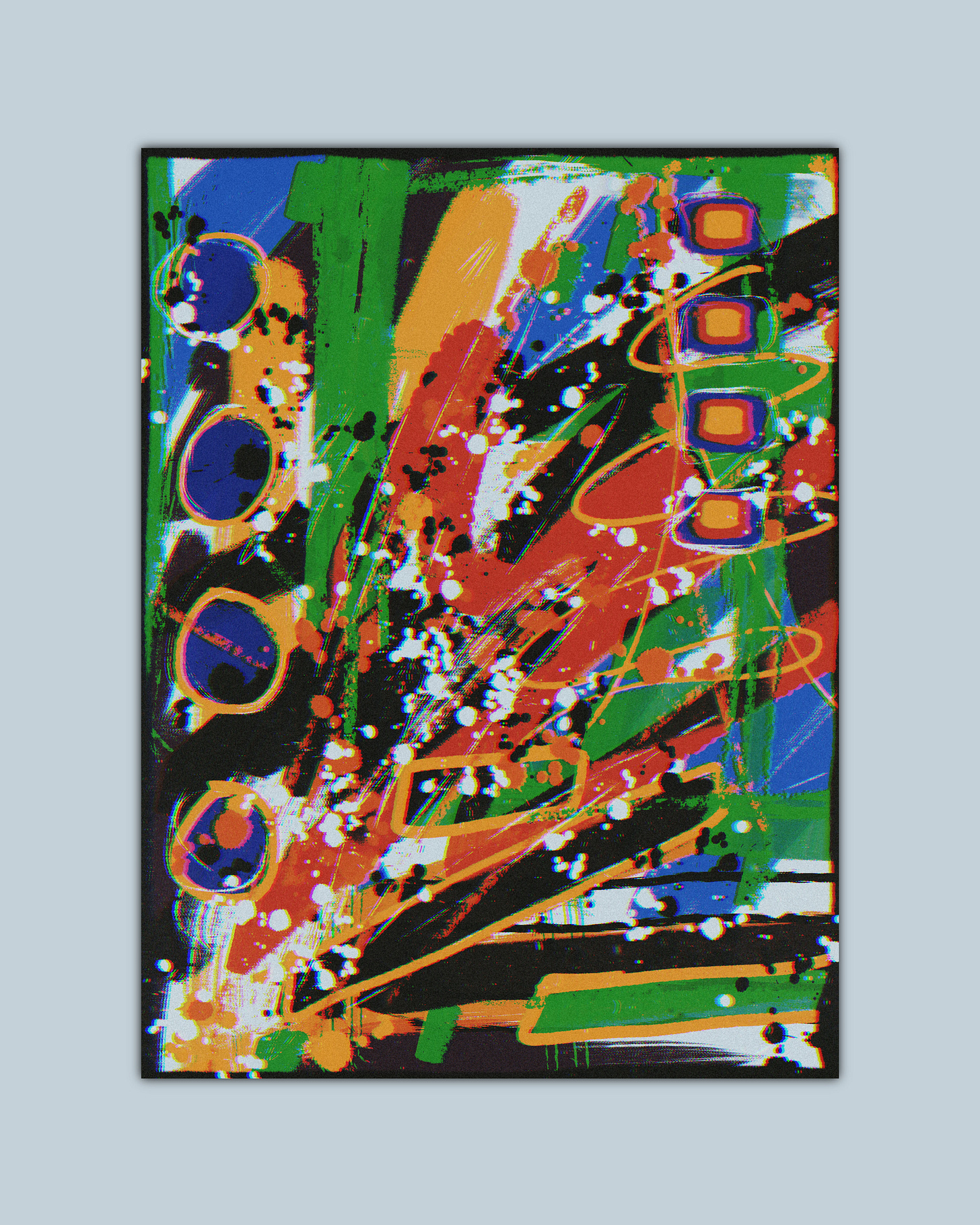Loneliness is an emotion that lingers in the quiet spaces between moments, an ache that reverberates through time. I Get Lonely is not just a painting—it is a visceral manifestation of that feeling, shaped by color, movement, and the subconscious echoes of heartbreak. Inspired by Janet Jackson’s song of the same name, this piece seeks to translate the yearning, vulnerability, and emotional turbulence of loneliness into a visual form.
Janet’s I Get Lonely captures the paradox of isolation—how one can feel the sharp edges of solitude even in the presence of memories, past loves, or distant figures. This painting mirrors that emotional complexity. Each brushstroke, color choice, and compositional element speaks to the struggle of longing for connection while simultaneously navigating personal sorrow. This is not a passive loneliness—it is active, chaotic, and raw.
Symbolism & Color Psychology
Red – The Fire of Emotion
Red dominates the piece, representing passion, heartache, and intensity. It is the color of desire, but also of wounds. The splashes and strokes of red symbolize emotional eruptions—memories resurfacing, unsaid words, and the deep ache of absence. It reflects the way loneliness does not simply sit quietly; it roars, pulses, and demands to be felt.
Green – The Hope of Healing
Green appears as a contrast to the red, offering a complex interplay between pain and recovery. Loneliness is not just about suffering—it is about the search for peace, about the way one attempts to find meaning in isolation. The green strokes suggest that within the depths of longing, there is still life, growth, and the possibility of renewal.
Black – The Abyss of the Soul
Black serves as a foundation, a reminder that loneliness can feel like an all-encompassing void. It is the space where thoughts spiral, where memories replay endlessly. The deep black undertones ground the piece, emphasizing the gravity of the emotions at play.
Blue – The Melancholy of Memory
The presence of blue evokes a certain sadness, a longing that is quiet and reflective. It softens the intensity of the red, suggesting that loneliness is not just fiery desperation—it is also a slow ache, a whispered regret, a distant echo of what once was.
Keep reading with a 7-day free trial
Subscribe to The Canvas & Cause to keep reading this post and get 7 days of free access to the full post archives.







